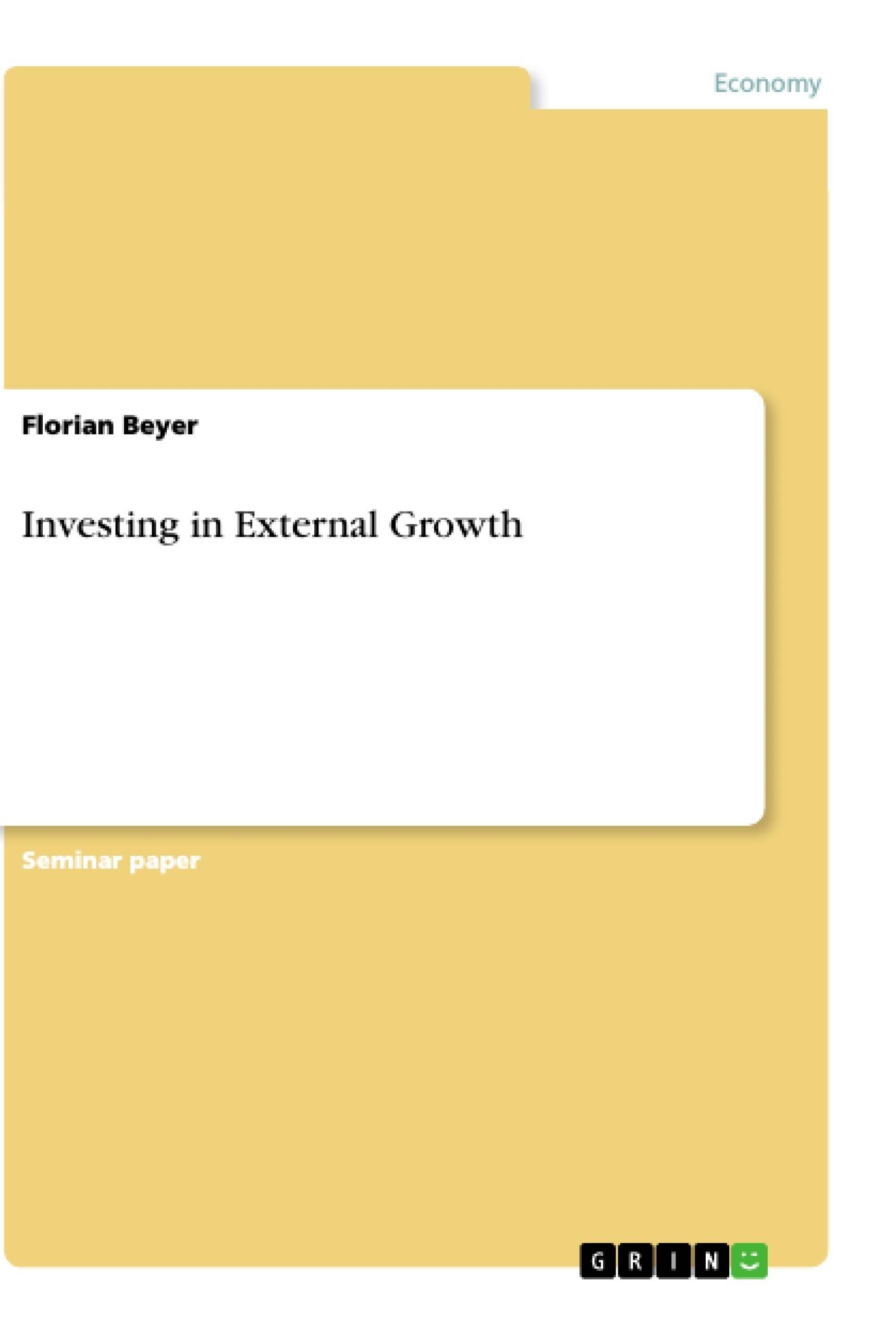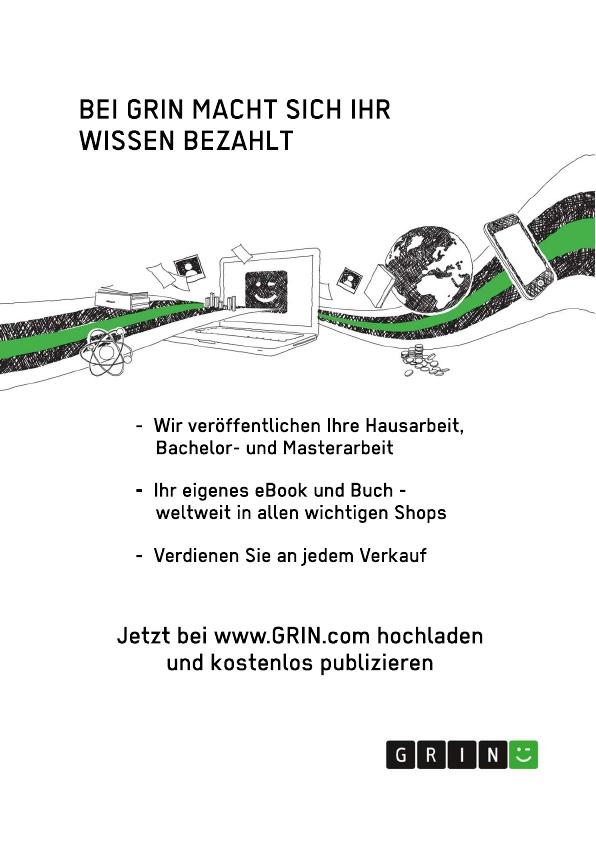External growth in forms of Mergers & Acquisitions (M&A) is massively driving the growth of many companies. In 2015, the total amount of 3.8 to 5 trillion to US-Dollars (USD) was spent on M&A, marking it as the year of the highest spending ever. Vivid sectors are healthcare and technology: in 2015, both accounted for over 700 billion USD each. Latest news reports a joint venture between Siemens and Gamesa merging their wind business and creating a new leading market player. If everything proceeds as planned, this will be the next big portfolio change after 2015’s acquisition of Dresser-Rand for approximately 7.8 billion USD. These latest developments in general and in particular within the Siemens AG are investigated in this paper with the objective of answering the question: What is the strategy behind M&A and how to evaluate the price of an acquisition? Thereby the case of the acquisition of Dresser-Rand Group Inc. by Siemens AG is covered.
Handling this topic the first step is defining the strategies to grow a company either with organically or inorganically growth. Subsequently, a closer look is taken at external growth in forms of M&A. The common forms of inorganic growth are introduced and the connected strategy is examined and evaluated. In addition, Siemens’ key acquisitions are considered to derive the underlying strategy.
The second part highlights how a possible acquisition can be evaluated. Therefore, different approaches are explained and used to value the acquisition of Dresser-Rand by Siemens AG. The different approaches are compared to the original price and each other concluding in a comparison and evaluation of the various methods.
Table of Contents
- Introduction
- Inorganic Growth: Forms and Strategies of Mergers and Acquisitions
- Organic versus Inorganic Growth
- Forms of Mergers and Acquisitions
- Strategies of Mergers and Acquisitions
- Mergers and Acquisitions at Siemens AG: Dresser-Rand
- Business Valuation Methods
- Net Asset Value Methods
- Income Value Methods
- Income Approach
- Discounted Cash Flow Method: WACC approach
- Market Value Methods
- Valuation of the Dresser-Rand Acquisition
- Conclusion
Objectives and Key Themes
This study aims to analyze inorganic growth strategies, specifically mergers and acquisitions (M&A), within the context of a real-world case study: Siemens AG's acquisition of Dresser-Rand. The analysis will utilize various business valuation methods to assess the financial viability and strategic implications of this transaction.
- Organic vs. Inorganic Growth Strategies
- Different Forms and Strategies of Mergers and Acquisitions
- Business Valuation Methods (Net Asset Value, Income Value, Market Value)
- Application of Valuation Methods to a Real-World M&A Case Study (Siemens AG and Dresser-Rand)
- Financial Analysis and Strategic Implications of M&A
Chapter Summaries
Introduction: This chapter likely provides a general overview of the topic of inorganic growth, specifically focusing on mergers and acquisitions as a key strategy for corporate expansion. It probably sets the stage for the subsequent chapters by introducing fundamental concepts and outlining the scope of the study. It may also briefly introduce the Siemens AG/Dresser-Rand case study that serves as the central example throughout the work.
Inorganic Growth: Forms and Strategies of Mergers and Acquisitions: This chapter delves into the intricacies of inorganic growth, contrasting it with organic growth strategies. It likely explores various forms of mergers and acquisitions, such as horizontal, vertical, and conglomerate mergers, detailing the specific characteristics and implications of each. The chapter probably also analyzes diverse strategies employed in M&A transactions, such as friendly takeovers, hostile takeovers, and leveraged buyouts, examining the circumstances under which each strategy is most appropriate. The overall goal is to build a comprehensive understanding of the theoretical framework surrounding M&A activity.
Mergers and Acquisitions at Siemens AG: Dresser-Rand: This chapter presents a detailed case study of Siemens AG's acquisition of Dresser-Rand. It probably analyzes the strategic rationale behind the acquisition, including Siemens' motivations and goals. The chapter likely examines the due diligence process, integration challenges, and the overall impact of the acquisition on Siemens AG's business operations and financial performance. Specific aspects of the deal, such as the valuation and financing, are likely discussed here.
Business Valuation Methods: This chapter provides a comprehensive overview of the various methods used to determine the value of a business in the context of an acquisition. The chapter likely explains net asset value methods, income value methods (including discounted cash flow analysis), and market value methods, detailing their respective strengths and weaknesses. It explains the underlying principles and calculations involved in each approach, equipping the reader to understand and evaluate the valuation process.
Valuation of the Dresser-Rand Acquisition: This chapter likely applies the various valuation methods discussed in the preceding chapter to the specific case of the Dresser-Rand acquisition by Siemens AG. It probably presents the results of applying different valuation techniques and analyzes the consistency (or lack thereof) between the various valuations. A key element would be a discussion of the valuation challenges and the potential sources of variation in the results, providing insights into the practical application of valuation methods.
Keywords
Inorganic growth, mergers and acquisitions (M&A), business valuation, discounted cash flow (DCF), net asset value (NAV), Siemens AG, Dresser-Rand, strategic acquisitions, financial analysis, corporate strategy.
Frequently Asked Questions: A Comprehensive Language Preview on Inorganic Growth: The Siemens AG Acquisition of Dresser-Rand
What is the main topic of this document?
This document provides a comprehensive overview of inorganic growth strategies, focusing specifically on mergers and acquisitions (M&A). It uses the Siemens AG acquisition of Dresser-Rand as a real-world case study to illustrate key concepts and methodologies.
What are the key themes explored in this document?
The key themes include: organic vs. inorganic growth, different forms and strategies of mergers and acquisitions, various business valuation methods (Net Asset Value, Income Value, Market Value), application of valuation methods to a real-world M&A case study (Siemens AG and Dresser-Rand), and the financial analysis and strategic implications of M&A.
What topics are covered in each chapter?
The document is structured as follows: An Introduction setting the stage; a chapter on Inorganic Growth: Forms and Strategies of Mergers and Acquisitions explaining different M&A types and strategies; a detailed Case Study on Siemens AG's Acquisition of Dresser-Rand; a chapter on Business Valuation Methods explaining Net Asset Value, Income Value (including Discounted Cash Flow), and Market Value approaches; a chapter applying these methods to the Valuation of the Dresser-Rand Acquisition; and finally, a Conclusion.
What specific business valuation methods are discussed?
The document covers Net Asset Value methods, Income Value methods (including the Discounted Cash Flow method using the Weighted Average Cost of Capital - WACC approach), and Market Value methods. Each method's strengths and weaknesses are analyzed.
How is the Siemens AG acquisition of Dresser-Rand used in the document?
The Siemens AG acquisition of Dresser-Rand serves as the central case study. The document analyzes the strategic rationale behind the acquisition, the valuation process, and the overall impact on Siemens AG's business and financial performance. The case study is used to illustrate the practical application of the discussed valuation methods.
What are the key takeaways from this document?
Readers gain a strong understanding of inorganic growth strategies, specifically M&A, various valuation techniques, and the practical application of these techniques in a real-world business scenario. The document provides a framework for analyzing the financial viability and strategic implications of M&A transactions.
What keywords are associated with this document?
Key words include: Inorganic growth, mergers and acquisitions (M&A), business valuation, discounted cash flow (DCF), net asset value (NAV), Siemens AG, Dresser-Rand, strategic acquisitions, financial analysis, corporate strategy.
Who is the intended audience for this document?
This document is geared towards academic use, focusing on the analysis of themes related to inorganic growth and mergers and acquisitions. It's particularly relevant for students and researchers in business, finance, and related fields.
- Quote paper
- Florian Beyer (Author), 2016, Investing in External Growth, Munich, GRIN Verlag, https://www.grin.com/document/536583




